Reed flute
Summary
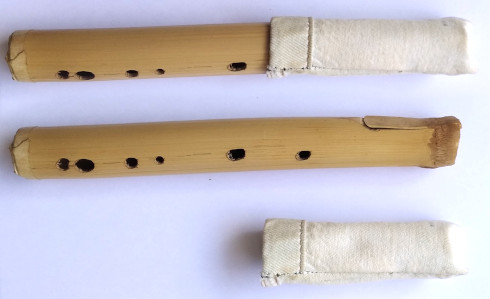
This is a rough wind instrument of my own design. It can be made on the fly and only requires a sharp knife. It is made from a short piece of Arundo Donax, a bamboo-like reed. Although it is very rough, it can teach a lot about the basic principles of wind instruments. In this page there is information about making tuning and playing the instrument.
How it sounds
The sound of the instrument is close to that of a saxophone or a clarinet because it utilizes a pulsating part of reed to produce sound.
How to play
Air must be blown around the thin piece of reed on the mouthpiece. The air passing by the reed makes it vibrate producing the sound - just like it happens with a saxophone.

In order to push air around this thin piece of reed, the lips should form a tight seal around it while at the same time keep distant from it so it can vibrate freely.
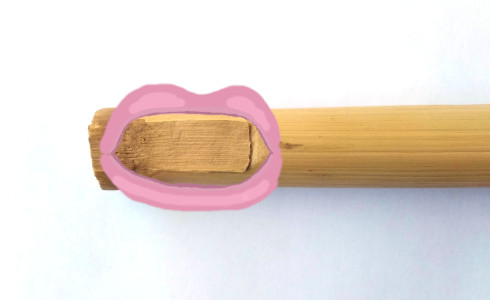
The positioning of the lips on the left side of the mouthpiece plays a crucial role. Placing the lips either closer to or farther from the pulsating reed's base can help in tuning the notes while playing or muffling the sound of the instrument.
Arundo Donax reed
This species of reed is native to the greater middle East (countries such as Egypt, Turkey, Iran ...). The pieces used in this project were harvested near a river in Greece. There is more information about Arundo Donax on its wikipedia page.
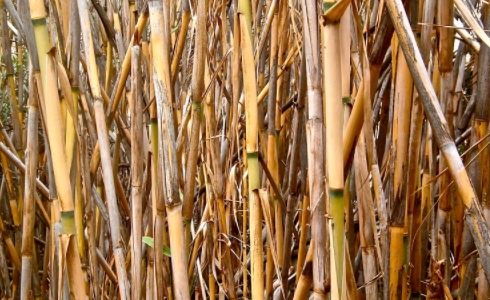
Making the mouthpiece
The instrument is made from a single section of reed that is closed on one end. The mouthpiece is carved near the closed end of the reed.
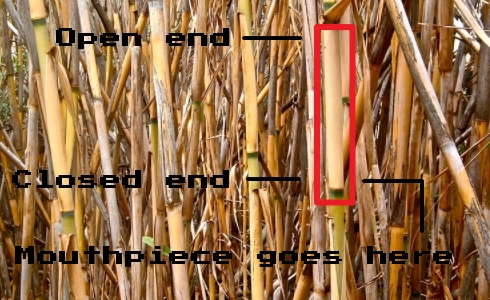
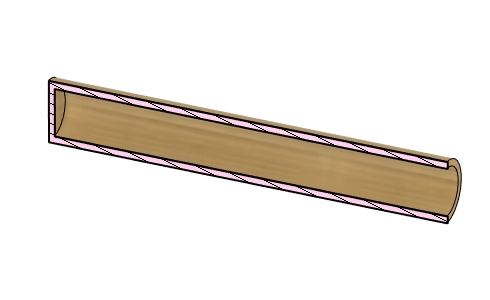
To make the mouthpiece the reed must be made flat on one side. This helps make the reed thinner and easier to bend and form the pulsating reed piece. Using a knife making this flat top is easy but great care must be taken not to reach the inside of the reed.

After flattening the top of the reed, the pulsating piece can be cut. A sharp knife must be inserted at 30°-45° to the reed's grain in the direction of the arrow on the next image. The knife's edge should cut as far as the inner cavity of the reed and just a bit further. To detach the reed piece from the rest of the body, the knife must be twisted, pushing the reed piece up.
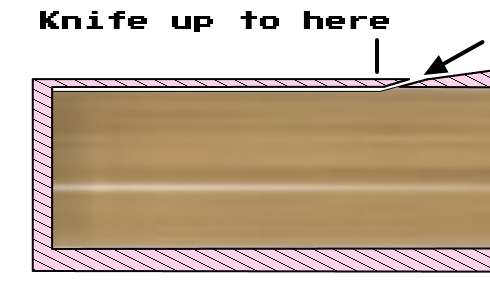
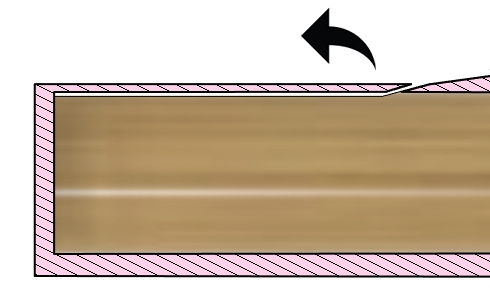
Making and tuning the holes
The note the instrument outputs without holes (or when all holes are covered) is tuned by altering the length of the instrument - by cutting portions from the end opposite to the mouthpiece. The note played when all holes are covered is the most bass note the instrument can output.
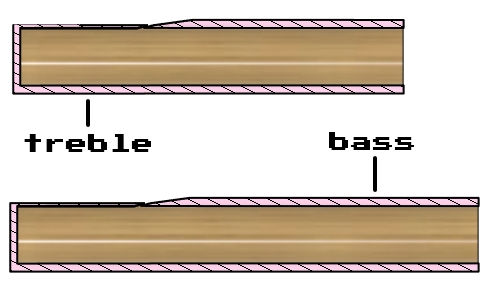
A hole on the body of the instrument rises the pitch of the played note when it is not covered. The exposed hole rises the pitch more when it is closer to the mouthpiece and when it is larger. The hole can be tuned by gradually making it larger after drilling it. The positions of the holes should also be somewhat comfortable for fingering.

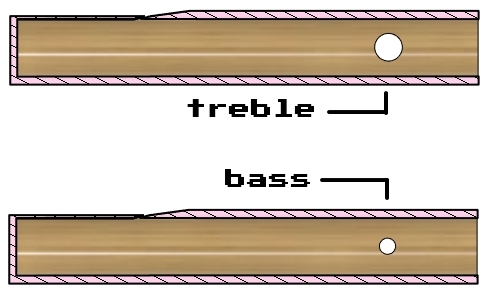
Any musical scale can be chosen for tuning the instrument.
Making a mouthpiece cover
A cover can be made to cover the mouthpiece. For this flute a cover was sewed out of some jean fabric to fit around the mouthpiece of the instrument.
